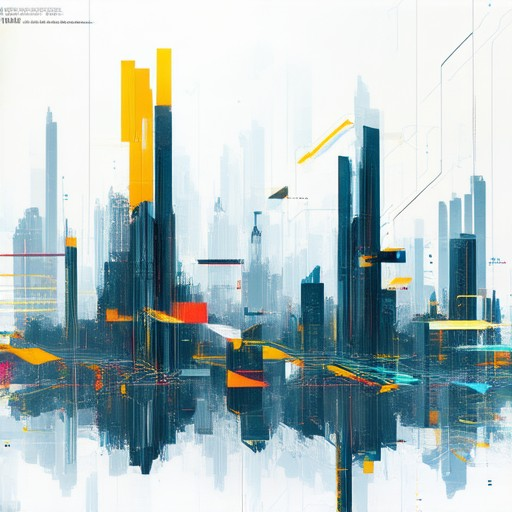Typography plays a pivotal role in shaping the overall aesthetic and user experience of a website, making it a cornerstone of modern web design. When it comes to best website typography, the choice of fonts and formats significantly impacts readability, engagement, and the site’s visual appeal. Whether you’re designing a new website or optimizing an existing one, selecting the right typography can elevate your content’s effectiveness and leave a lasting impression on visitors. In this comprehensive guide, we’ll explore the latest trends, top fonts, and expert tips to help you master best website typography in 2024. From understanding the best font formats to discovering the most readable fonts and eye-catching combinations, this article serves as your ultimate resource for crafting a typography strategy that resonates with your audience and enhances your digital presence.

Best Typography for a Website
The best typography for a website involves selecting fonts that are not only visually appealing but also ensure readability and accessibility across various devices and browsers. Here are the key considerations:
- Web-Safe Fonts**: Arial, Times New Roman, and Verdana are widely recognized as reliable choices that are available on most systems.
- Serif Fonts**: Serif fonts like Georgia and Playfair Display offer a traditional, book-like appearance and are suitable for designs wanting a classic feel.
- Sans-Serif Fonts**: Modern and minimalist, fonts like Helvetica and Roboto are ideal for tech-driven websites and those aiming for a sleek, contemporary look
- Readability**: Ensure font size is around 16px, adequate line height, and proper spacing between letters and words for ease of reading
- Brand Consistency**: Align font choice with the brand identity to maintain visual coherence
- Accessibility**: Choose fonts that are compatible across devices and browsers to ensure all users have a consistent experience
- Responsive Design**: Opt for fonts that adapt well to different screen sizes, crucial for today’s multi-device landscape
- Contrast**: Consider background colors to ensure text legibility, whether light on dark or dark on light backgrounds
Ultimately, the best font selection is a balance of aesthetics, functionality, and brand alignment. Testing across platforms is recommended to ensure optimal performance and user experience .
Best Font Format for a Website
For optimal web typography, the best font formats to use are WOFF (Web Open Font Format) and WOFF2. These formats are widely supported across modern browsers and devices, ensuring your font displays correctly without relying on system fonts. While web-safe fonts like Arial and Times New Roman are a fallback option, using WOFF/WOFF2 provides more control over design and typography.
To implement these fonts, host the font files on your server and link them in your HTML using <link> tags in the <head> section. For added convenience, consider using third-party services like Google Fonts or Font Squirrel, which allow direct embedding without hosting files. However, always test for browser compatibility and optimize font loading to maintain fast page speeds.
By combining WOFF/WOFF2 with web-safe fonts and leveraging services like Google Fonts, you can achieve broad compatibility while enjoying the benefits of custom typography. Always ensure your implementation aligns with best practices for performance and accessibility.

The Best System Font for Websites
When selecting the optimal system font for your website, it’s essential to consider factors such as readability, availability across different browsers and devices, and aesthetic appeal. Here are the most recommended fonts:
- Arial : A clean, modern sans-serif font that works well on both Windows and macOS.
- Hellvetica : Developed by Adobe, it’s widely used due to its neutrality and adaptability across various platforms.
- Times New Roman : While traditionally a print font, it can be suitable for headings requiring a classic appearance.
- Georgia : A serif font designed for screen readability, making it ideal for body text.
- Verdana : Created by Microsoft, it’s optimized for screen reading and is excellent for body text.
- Roboto : Google’s default font, known for its simplicity and effectiveness in user interfaces.
- Playfair Display : A serif font that adds elegance to headings and titles.
These fonts are chosen for their compatibility, legibility, and ability to enhance the overall design of your website. Consider your target audience and the specific atmosphere you wish to convey when selecting the appropriate font for your site.

Most Readable Font for a Website
The optimal font choice for a website depends on several factors, including readability, aesthetics, and functionality. Here’s a breakdown of the most readable font types:
- Sans-Serif Fonts : These fonts, such as Arial and Helvetica, are highly readable due to their clean, modern design. They are widely available and scalable across various screen resolutions.
- Serif Fonts : While traditionally elegant, serif fonts like Times New Roman can be less readable on screens. They are better suited for headings or print materials.
- Monospace Fonts : These fonts, such as Courier New, are useful for specific design elements but are not ideal for large text blocks due to eye strain.
- Script and Decorative Fonts : These fonts, though visually appealing, may hinder readability and are best reserved for decorative purposes or small text sections.
Consider the context of your website. Sans-serif fonts are generally recommended for body text to enhance readability, while serif fonts can be effective for headings. Ensure proper alignment, color contrast, and spacing to further improve text legibility.
What Font Catches the Eye the Most?
The choice of font can significantly impact the visual appeal and effectiveness of a design. Here are some of the most eye-catching font types and their characteristics:
- Serif Fonts: Known for their small lines at the bottom of letters, serif fonts like Times New Roman are traditional and often associated with trustworthiness. They can be eye-catching due to their classic appearance and legibility.
- Sans-Serif Fonts: Clean and modern fonts like Arial or Helvetica are easy to read on screens and are often used in digital designs. Their simplicity can make them stand out as they are less cluttered than serif fonts.
- Script Fonts: These highly stylized fonts, such as calligraphic ones, add elegance and artistry to designs. They can be particularly eye-catching when used for headings or decorative purposes.
- Bold Fonts: Whether thick or simply large, bold fonts can draw immediate attention. They are ideal for headlines and are effective in grabbing quick glances.
- Decorative Fonts: Elaborate fonts with intricate designs can be visually striking. However, they should be used cautiously to avoid overwhelming the viewer.
- Modern Fonts: Fonts inspired by technology or minimalism offer a sleek, contemporary look. They are appealing to younger audiences and can make designs feel cutting-edge.
When selecting a font, balance aesthetics with readability. Consider the context and purpose of the design. For example, a formal brand might prefer serif fonts for professionalism, while a tech company might opt for modern sans-serif fonts to align with their brand identity.

Most Trustworthy Fonts for Websites
When it comes to selecting the perfect font for your website, trustworthiness is crucial to ensure readability, aesthetics, and overall user experience. Here are some of the most reliable fonts available:
- Google Fonts : A trusted source offering a variety of web-optimized fonts. Notable options include:
- Roboto : Clean and modern, ideal for body text.
- Playfair Display : Elegant serif font perfect for headings.
- Open Sans : Versatile font suitable for various uses.
- Free Fonts (Source Sans Pro) : A popular free font known for its simplicity and readability, making it excellent for body text.
- Bebas Neue : A modern, free font that works well for headings without the traditional serif details.
These fonts are chosen for their reliability across different browsers and devices, ensuring consistent rendering. They also support typography hierarchy, enhancing readability and structural clarity. Consider your brand identity when choosing fonts, balancing consistency with variety to avoid visual clutter. Optimize font loading for performance and ensure accessibility by avoiding overly decorative designs.
Conclusion
When selecting fonts, prioritize those that are widely used, have strong browser support, and are optimized for digital displays. These choices will contribute to a professional and user-friendly web presence.




0 Comments